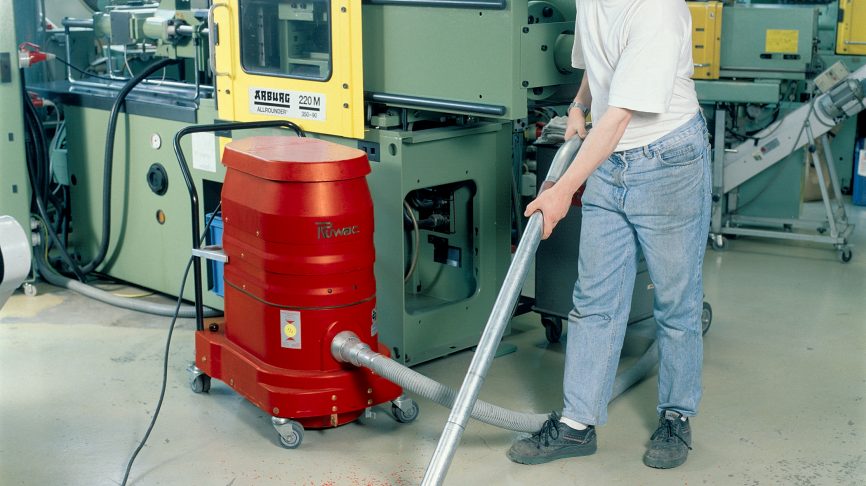A Cleveland auto coatings plant is handed down a $62,300 fine by OSHA for violating combustible dust hazards. A combustible dust explosion at a British Columbia wood pellet plant leaves 3 workers injured. Each week, it seems like there is a news story about one facility or another across all industries disregarding safety measures surrounding dust housekeeping, putting workers in danger and, when caught, taking a hit to their business through proposed fines, loss of wages, production downtime, and future inspection scrutiny. Dust In Case has at length discussed properly educating workers on the severity of combustible dust, and on the heels of National Fire Protection week, now is a great time to remind those within the factory sector of 5 easy first steps to take to extinguish combustible dust fire risks:
1. Minimize dust – In compliance with OSHA regulations, dust accumulation should not exceed more than 1/32 of an inch throughout any part of the factory. Failure to do so can not only increase your risk of a combustible dust fire, but lead to a hefty fine upon OSHA inspection. See Dust In Case’s tips on how to create a documented housekeeping program for more help on how to make the cleaning process second nature!
2. Clean using caution – While cleaning, be careful to not suspend dust into the air. Clean dust from production areas using vacuums approved for the particular type of application, and don’t forget to clean areas overhead and in other hard to reach places! Check out our recommendations on which vacuums to use for grain dust, powder coating, nutraceuticals and pharmaceuticals and how to ensure your vacuum is explosion proof, to start!
3. Eliminate all risk areas – Station and install relief valves away from any dust hazards.
4. Repair and maintain equipment – Shut down and immediately repair any equipment or process that produces a dust cloud. Perform regular maintenance on all equipment to ensure they are operating properly.
5. Control static electricity – Do not operate any equipment if an ignition source such as static electricity is present, as a spark may be all it takes to ignite a combustible dust fire. All equipment being used should bonded and grounded to reduce the production of static.
Be advised that the battle against combustible dust goes beyond just these five helpful steps, such as knowing OSHA and NFPA guidelines, having an industrial housekeeping plan in place and training workers on the importance of dust removal. These tips at the very least cover the basics of providing your factory with a safer environment if you don’t already practice them.
Have any tips of your own to share? We’d love to hear them in the comments below!
(source: PropertyCasualty360.com)


